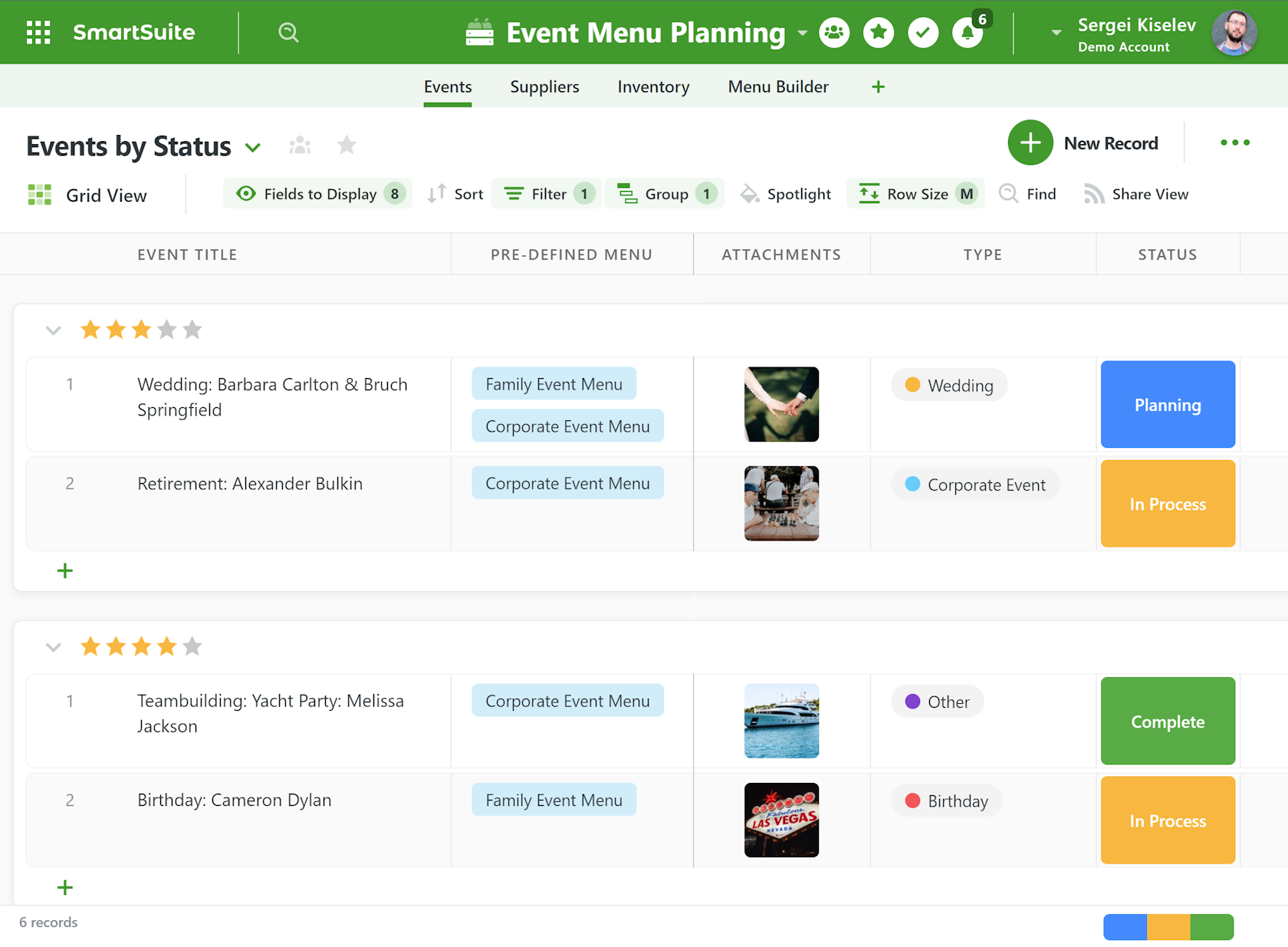
9 Key Steps for Successful SaaS Platform Development
SaaS is a cloud computing model of software distribution that involves having third-party companies as the hosts of an application. These companies provide various SaaS applications to customers over the Internet. According to Gartner, the SaaS industry has grown from $31.4 billion since 2015 to about $1,617.1 billion in 2022. This equates to more than 5x growth in just 7 years.
SAAS MODEL TYPES AND SAAS PRODUCT CATEGORIES
A SaaS product is cloud-based software that is accessed by subscription and only through the Internet.
Companies providing SaaS solutions choose one of two models - horizontal or vertical.
The horizontal SaaS model means that the products delivered by the company are able to satisfy a wide range of users, regardless of the industry. For example, Google, Microsoft, and Salesforce have in their portfolio products that are used by almost any business and cover their needs.
The vertical SaaS model implies solutions for specific needs or niche industries. For example, RetailNext is developing a specific list of retail-only solutions.
Categories or types of SaaS product
Although today Saas products have spread to almost all types of business activities, for some areas this software model is the most typical. These are products such as:
- CRM systems
- EPR systems
- Accounting/Billing systems
- Project Management platforms
- Content Management systems
- Communication tools
KEY REQUIREMENTS FOR SAAS SOFTWARE
- Be simple to understand and attractive to the target customers.
- Be trustworthy as the incorporated algorithms help businesses in the complex and crucial decision-making processes.
- Embrace consistency in all the applications so that they achieve a common goal when linked up.
- Create a connection among the potential users and make it easy for them to make informed decisions.
- Solve existential and foreseen problems.
- Be updated and embrace the latest technological trends.
So, are you ready to find out how to create a software-as-a-service platform?

1. STARTING WITH AN IDEA
The first step to building software-as-a-service for startups is to have a practical idea, and the need for a minimum viable product (MVP) arises at this stage. An MVP is a version of an anticipated product in the market that lets developers collect maximum feedback, and learn what outcomes the intended customers are looking. Validated learning is a crucial step as developers create a SaaS platform since it takes into account the customer’s needs at every stage of product development.
MVPs ensure that you build SaaS software that solves people’s needs. MVPs help determine whether a problem exists, its importance and whether a particular SaaS will serve to solve the problem. Moreover, a priority list of features will ensure that an MVP addresses the relevant issues and that the feedback received is useful to the developers. Therefore, developers will identify any possible usability and technical issues early enough in the software as a service development.
2. IDENTIFYING MUST-HAVE FEATURES OF A SAAS SOFTWARE
Any software application contains must-have features that are crucial to ensure the achievement of its goal. In the MVP creation stage, you identify the must-have features of a SaaS and the complementary elements that should be saved for later incorporation into the SaaS software. The should-have features are those whose importance becomes visible in the final stages when you plan how to build a SaaS product. All these features should be on the priority list of the SaaS software in a bid to determine the functionality that should be present in an MVP.
THE STEPS NEEDED TO IDENTIFY SAAS SOFTWARE PRIORITY FEATURES

A. Creating an Activity Model and User Flows
This entails outlining the steps followed by any SaaS users in an enterprise and helps identify the top must-have features for your application. The priority features identified will help solve your customers’ problems. The main feature is what the intended users will come back to every day, and that should drive your SaaS application development journey.
B. Keywords from Product Descriptions
Creating a precise description that entails how your product works and the functionalities it achieves helps select the most important features for your MVP. However, the focus on the keywords is crucial at this stage. The keywords will help in the creation of user stories for the various functionalities.
3. Creating a Mockup and Database Schema
A mockup is a demo for the users that shows the different screens that they will have to go through as they interact with your SaaS software. The fewer steps there are, the higher the chance that your target users will love to use the software, since this means they will need less time to achieve their goals. Users might suggest a feature that they deem essential, and you should take note of that, and incorporate it if you have enough consumers that show interest in the function when you develop a software-as-a-service solution.
A database schema describes the leading entities of the application, and how they relate. A schema is a pictorial representation of software that demonstrates to the developers what is expected of them as they strive to come up with functional software. Moreover, developers understand the needs and expectations of users from a schema.
4. Choosing the Technologies to Use for Your SaaS Application
This is a technical aspect of SaaS software that needs professional advice to make any decisions. At this stage, you need expert advice from your developers in the form of an analysis of the technologies to incorporate into your SaaS application. The technicalities of any software include the coding languages and techniques used for both backend and frontend development, as well as their flexibility. Make sure to build your own SaaS that is easy to modify whenever you need to, rather than one that would need to be completely replaced when you need to modify it. It is vital to use available open-source development tools as they help reduce the budgets for any SaaS applications.
5. Choosing a Development Team
Having qualified software developers on the development team will ensure the successful delivery of your intended products. We recommend you choose a company that offers a complete package in software development right from the planning and design phases. A collaborative team that engages its potential users and is equipped with the relevant skills and experiences is a crucial investment in any SaaS software development journey.
Gearheart is a web development team that offers the best technical support to its SaaS customers. Gearheart uses the latest technologies in the development of a SaaS platform to ensure the delivery of quality applications to clients.
Also, it’s essential to have development partners who will provide continuous support and maintenance of the SaaS software even after the development stage. Ongoing support from the software developers ensures the success of an SaaS application even in the long run. Moreover, the developers help ensure optimal performance as they can conduct maintenance and periodical upgrades to suit customers’ needs.
Experienced and skillful developers will design a SaaS application that will stay relevant in the industry for a long time as they maintain and integrate it with emerging technologies. Furthermore, some functionality may need polishing after rolling out a project, and that may require additional development work. Gearheart.io is a web development partner that offers maintenance and support to its customers as needed, and is thus an excellent choice for your SaaS applications’ development work.
6. Building the Product
Building a SaaS requires you to choose the most appropriate methodology and technologies that will suit your clients. Therefore, professional advice and extensive research is mandatory before this stage commences. For a free consultation on the various aspects of a product, you can visit gearheart.io. At this stage, you have to choose between manual and automatic testing of the product, and choose development methods that will allow updates and modification of the product in the future to meet the growing clients’ needs.
Agile and Waterfall Methodologies
The Agile methodology is preferred to the traditional waterfall software development methodology due to the associated benefits. The waterfall methodology does not allow for the flexibility for most applications once they are developed. On the other hand, Agile methodology offers developers the ability to foresee any future challenges and avoid them.
Agile methodology encompasses sprints, which are one- to two-week periods, where the development teams should come up with a working project feature. When using the Agile software development methodology, developers can test the outcome and identify any possible challenges, that are then dealt with right away.
Moreover, over the past few years, agile methodology projects have registered a higher success rate than the waterfall method, with a rate of 64%, compared to 49% shown by projects using waterfall method.
Test Automation
In all software, there exist broken lines of code that make an application bulky, and the developers need to identify the bugs and remove them. Test automation reduces the time taken by manual tests, and ensures that code assessments can be done unattended, which saves time. Moreover, manual checks are done by human beings who make mistakes, while the automated testing doesn’t.
Continuous Integration
This is the ability of a SaaS application’s architecture and functions to receive updates and software patches without necessarily causing disruptions among the clients. Continuous integration of code is possible with the Agile methodology, since a developer only pushes any updates to the application repository in the cloud, and an update occurs once code compiles. Therefore, continuous integration, as provided by SaaS, is crucial, since it reduces the time taken by developers to debug code, as developers get notifications in case errors appear during the compilation.
Ensuring that the developers follow a code of conduct in their work requires that they embrace universal coding standards. Therefore, any line of software code written by a team member can easily be interpreted by the other developers. Having universal coding standards makes it easier to identify any bugs and fix them, and as a result, the developers can deliver their work more efficiently.
7. Launching a SaaS

It is a good business idea to make the target customers hyped before the launch of any product. Therefore, before rolling out your SaaS software, make sure you run a hype campaign to make the potential customers look forward to using it in their companies. Social media marketing is a useful component in reaching out to as many potential customers as you can. If you need to learn more about creating hype around your upcoming product, visit gearheart.io for more information.
8. Rolling Out SaaS
The feedback loop for any product is critical in ensuring a successful, efficient, and satisfactory delivery to the potential clients and target customers. Building an MVP acts as an experiment in what the real SaaS market looks like, and what the consumers expect. The MVPs can then be analyzed, and hypotheses drawn that will help the development team come up with better products.
9. Creating a Product’s Roadmap and Future
The feedback from the beta testers, who act as the potential clients, is essential in deciding the roadmap and future of a product. The feedback points out the critical functionality that should be incorporated into the product’s future releases and subsequent updates and security patches. Lack of a well-outlined roadmap for any SaaS creates a risk of its failure in the future.
HOW MUCH DOES SAAS PLATFORM DEVELOPMENT COST?
You can probably create a SaaS software on a $50,000 to $150,000 budget. But as you can see, the range is quite wide, since many factors affect the final cost of the solution.
First of all, of course, this is the complexity of the product itself in its functionality, architecture, integrations, access levels, security, etc. Also, the price will be affected by whether you are creating an MVP or a full-fledged system right away.
The type of product will also shape your final budget. It is not difficult to guess that the email marketing service will be much cheaper than an ERP system.
An important factor is who you entrust the development to, a freelancer or an outsourcing company. If you additionally navigate by region, then be prepared for the fact that development in the US will cost you several tens of thousands of dollars more than in Eastern and Western Europe.
HOW LONG DOES IT TAKE TO BUILD A SAAS PRODUCT?
SaaS platform development can take from 1 month to a year. If we are talking about MVP, then based on our cases, we can roll out a prototype in 1 month to attract the first users and collect early feedback. We always advise starting from the profit center, as this will reduce your costs and save time on testing key functionality. Further development speed depends on resources, product size, functionality complexity, multi-tenancy, necessary integrations with third-party services, etc.
For a more accurate development time estimate, it's best to contact the development team directly. On our website, this can be done quickly and conveniently here.
CONSIDER GEARHEART YOUR TRUSTED PARTNER
Our team has extensive experience in creating SaaS systems for various industries and users.
So, our biggest project that we created from scratch is the SmartSuite work management platform. This is a no-code solution, a direct competitor to Airtable and Notion, available to users on a SaaS model. SmartSuite provides a collaborative work management platform that allows teams to plan, track and manage any workflow—whether it be a project, ongoing process, or routine day-to-day tasks.

Also, as one of the successful examples, you can see our case of creating a platform for media monitoring called LOOQME.

We were faced with the task of creating a universal platform capable of collecting and analyzing information from more than 10,000 different media sources into a single database. At the same time, the product had to have a clear and user-friendly interface for customers, as well as automate reporting. The creation of this SaaS platform started with an MVP. Thus, we were able to launch a prototype system in just 1 month.
To get more information on how to build a software-as-a-service platform and our SaaS products, just drop us a line here.
WRAPPING UP
In conclusion, SaaS development is a process that needs you to have the best choice of technologies and developers. For you to identify the priority features of your SaaS software, you need to pay attention to the product descriptions as well as appropriate activity models.
Moreover, starting in the SaaS market, you are likely to make many mistakes as you learn. It is vital to choose the right development team that is rich in experience and skills and one that embraces the Agile methodology. This improves the flexibility of your development process and, in turn, ensures that your SaaS can remain relevant for a long time. With the incorporation of related updates and security patches, SaaS is the way to go as you get willing clients that want your services. Therefore, SaaS application development is a lucrative field that helps many businesses serve customers more efficiently and with higher satisfaction rates.
We hope you now have a better understanding of how to make SaaS software.
FAQ
1. How SaaS development is related to cloud computing?
Cloud computing is an umbrella concept that covers computing resources according to the IaaS, PaaS, and SaaS models. Therefore, SaaS is one of the subspecies of cloud computing.
2. What is SaaS application development?
This is a complete SaaS development process of an app that is hosted in the cloud and available to users over the Internet with various subscription terms to use its functionality. Such an application does not require installation on your own devices and therefore is available from any device that is connected to the Internet.
3. How to build your own SaaS?
SaaS platform development is a rather laborious process. You will have to go through several stages from the general idea, the creation of the MVP to the deployment of a full-fledged system. We have described the detailed steps in our article.

